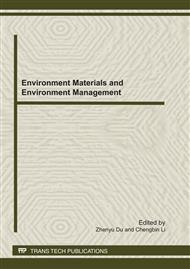p.174
p.179
p.183
p.187
p.191
p.195
p.201
p.211
p.215
Evaluate the Efficiency of Fenton Oxidation and the Coagulant Aids in Fenton-Flocculation Process
Abstract:
Fenton-flocculation process as one of effective the advanced oxidation treatments was widely used and studied. In this paper, the efficiency of Fenton oxidation was evaluated by the velocity ratio of CODcr decreased to Fenton reagent consumed. The coagulant aids, PAC and PAM, were canalized by CODcr removal rate, transmittance of the supernatant, the flocculation ratio and sludge settling ratio in Fenton-flocculation process. As the results shown, comparing with flocculation by Fenton reagent, transmittance of the supernatant and flocculating ratio can reach 50% and 80% respectively. The optimal dosage of coagulant aids is PAC 60 mg/L or PAM 4mg/L. The efficiency of Fenton oxidation is decreased but not be increased by adding more Fenton reagent in the advanced treatment of waste water.
Info:
Periodical:
Pages:
191-194
Citation:
Online since:
July 2011
Authors:
Keywords:
Price:
Сopyright:
© 2011 Trans Tech Publications Ltd. All Rights Reserved
Share:
Citation:


